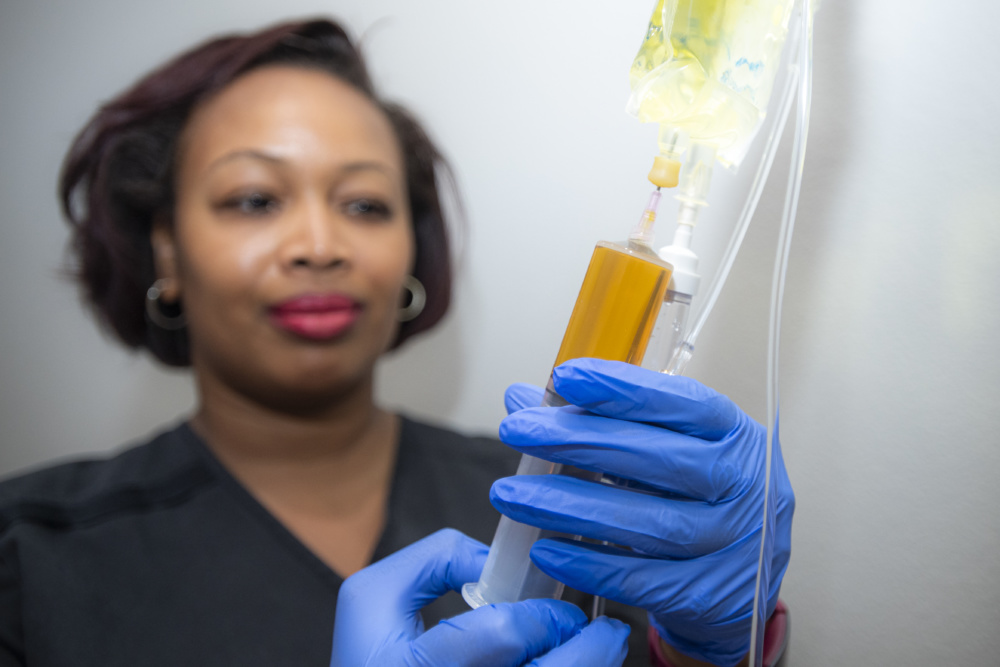By Steven J. Cyr, M.D., FAAOS
Most people at some point in their life have had a headache. Unfortunately for some, this unpleasant event occurs far too often. There are many different types of headaches. This is because there are many different sources of headaches. The term headache is a good descriptive umbrella term but it does not specifically differentiate the subtle differences between the various headache types and sources. For example, according to the American Migraine Foundation, there are 23 different types of headaches. A few of the more common types include Cervicogenic headache, Tension-type headache, and cluster headaches. Headaches can be also described by the location of manifestation on the head. Some headaches only occur toward the back of the scalp whereas other headaches involve the entire head or are more toward the forehead. The tension-type headache is a common headache which relates directly to the neck. Occipital headache also relates to the neck. When the neck vertebrae are poorly aligned or the discs are degenerated, a headache can be part of the constellation of symptoms that ensue.
The neck vertebrae are referred to as cervical vertebrae and poor posture of the cervical vertebrae can result in pain and headache. Many people have poor posture due to their workplace requirements. Of course this is only one source of poor neck posture. However, prolonged exposure to poor posture can strain the soft tissue discs within the neck. This can result in herniation of those discs. The discs are a primary source of stabilization between spinal vertebrae, and any compromise or degeneration of those discs can cause pain. Pain can come from the disc itself, from the surrounding joints in the neck, muscle fatigue, nerve compression, or other soft tissue sources. Figuring out the source of that pain is not a straightforward process.
Pain from a disc in the neck is unlikely to respond positively to any conservative measures. Pain from the joints in the cervical spine has been documented in the literature to display both up and down the neck. If a painful joint is located higher in the neck, that pain may extend up into the scalp. This pain can feel like a headache. So, if a disc has degenerated, causing joint pain in the neck, the pain can be primarily perceived as a headache. This is true but not straightforward and this is why clinical professionals are carefully trained to differentiate between these different sources of pain. Most of the time, joint pain from the neck only affects the posterior scalp. However, pain from the neck can extend beyond the neck.
Another source of headache from the neck can be from nerve compression due to muscle spasm. A muscle in spasm may be attempting to hold the spine in place but in turn causes nerve compression. The spine is highly mobile and muscles greatly affect the posture of our spine. Anywhere in the spine, if a muscle is in spasm, there can be nerve compression from that spasm.
“Physical therapy, exercises, massage, medication, activity modification, injection, postural training, ice, and rest are all effective conservative treatment avenues.”- Dr. Steven Cyr
In the neck, at the base of the skull, there is a large nerve called the Greater Occipital Nerve which supplies the posterior scalp with sensation. The anatomy of the Greater Occipital Nerve describes it actually emerging through a muscle called the Trapezius. Another muscle in close proximity to the Trapezius is the Obliquus Capitis Inferior. Any spasm of either of these two muscles can pinch the Greater Occipital Nerve, causing pain. The posterior scalp difficulties can be painful but this can be treated with a nerve block injection procedure.
Cervical herniated disc is diagnosed through a detailed history, clinical examination, and a combination of images including radiographs and MRI. While it is not possible to diagnose a muscle spasm from either of these studies, a medical professional can identify the root cause of the spasm which is likely contributing to the pain and headache. There are many non-operative treatment options for a cervical herniated disc. Physical therapy, exercises, massage, medication, activity modification, injection, postural training, ice, and rest are all effective conservative treatment avenues. Often, a therapeutic injection can both serve to diagnose and treat a source of pain. While this injection does not reverse a herniation, it can help greatly reverse the symptoms of neck pain and headache from a herniated disc. Ultimately, the goal of treatment is eradication of the source of pain. Conservative means of this is ideal. There are however, cases where conservative treatment is not able to provide acceptable relief. In this case, a surgical procedure is discussed. There are different surgical procedures for the different cervical issues in the neck and an appropriate plan can be determined through a thorough workup and diagnostic process.
At The Orthopaedic & Spine Institute, Dr Cyr and our uniquely trained team of medical professionals have experience in treating all symptoms and conditions of the spine, from the cervical spine to the sacrum. If you suffer from neck or back pain, contact us to schedule a consultation.
Dr. Steven Cyr is one of the nation’s few Mayo Clinic trained spine surgeons. His training included both orthopaedic and neurosurgical techniques of the spine. The Mayo clinic is one of the world’s leading medical institutions and has ranked number one for orthopedic and neurosurgical training programs in America for more than 20 years. Dr. Cyr is the President and Founder of The Orthopaedic and Spine Institute in the South Texas Medical Center located at 8401 Datapoint Drive, Suite 700, San Antonio, Texas 78229. (210) 487-7463 or (844) 896-7846 www.saspine.com





Recent Comments